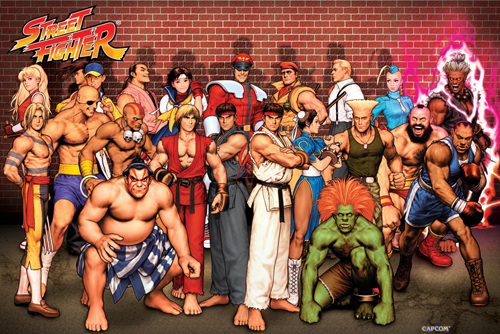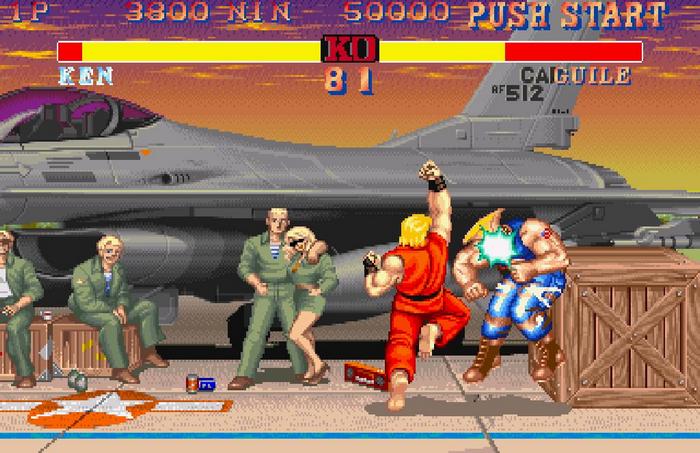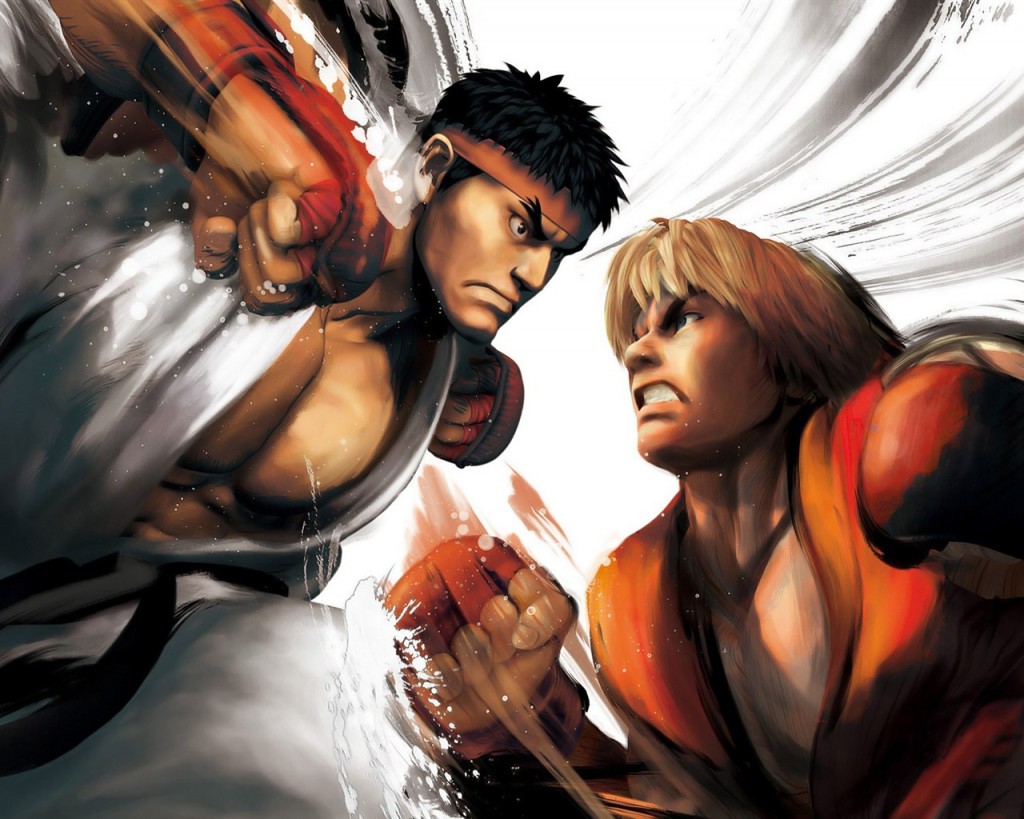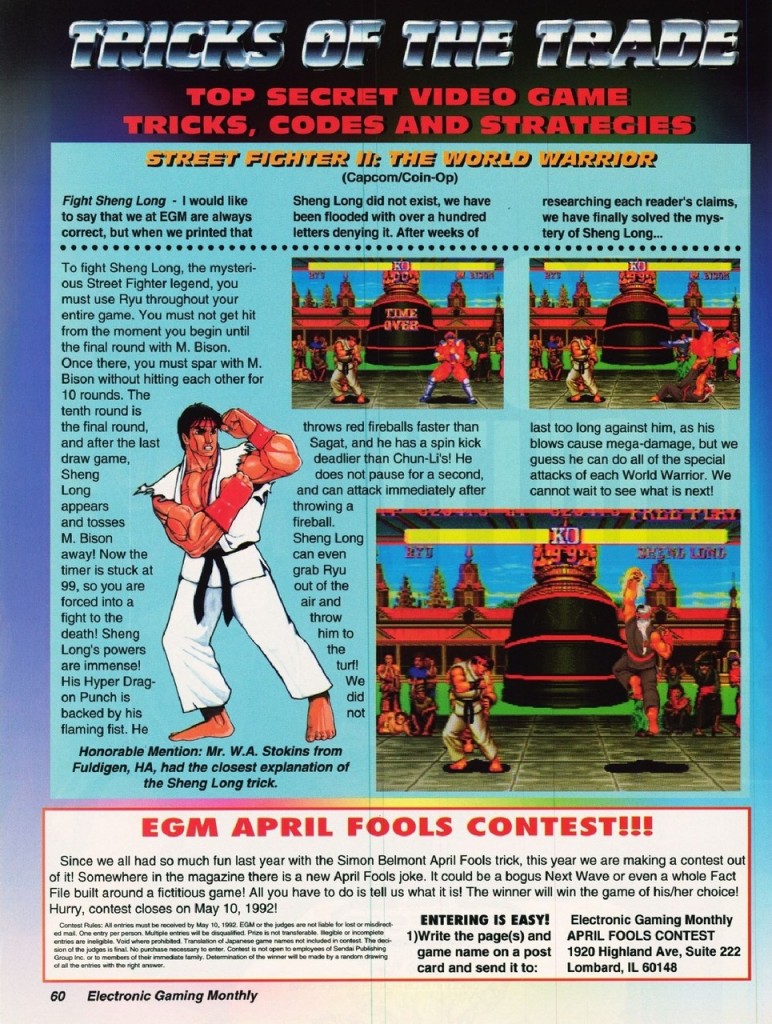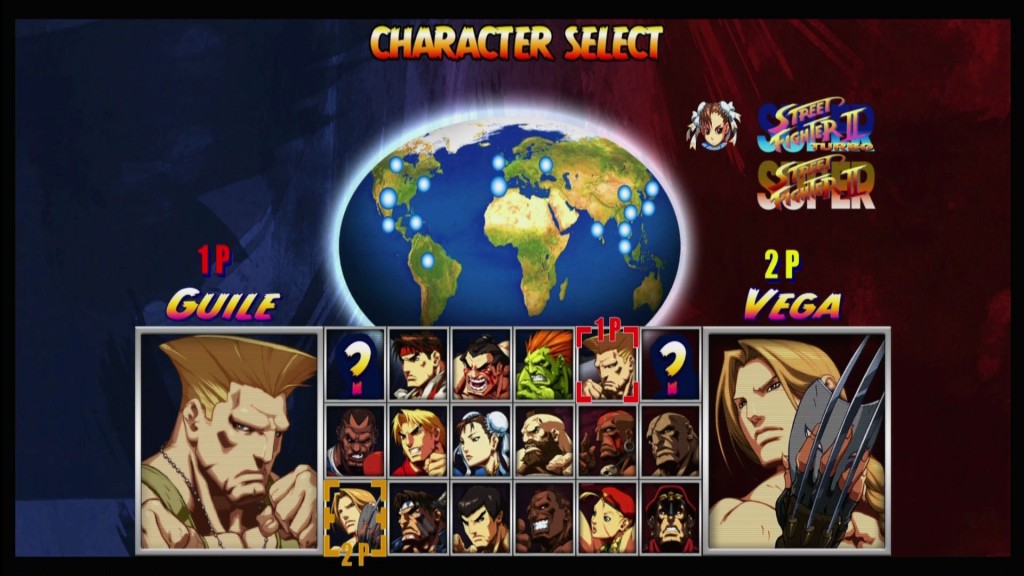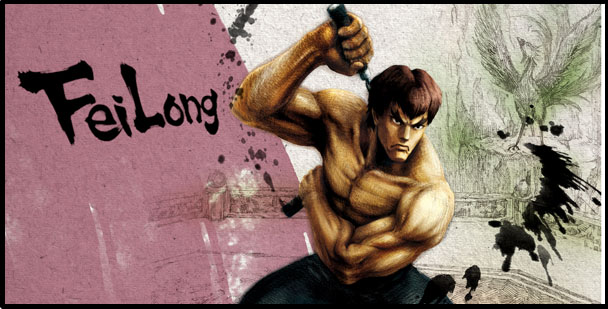Welcome to the second volume of 10-Hit Combo; the series for ActionAGoGo which takes a look at ten facts about some of the most iconic fighting video game series of all time. Arguably, the most iconic and innovative fighting game series of all time has been Capcom’s Street Fighter. Conceived by Takashi Nishiyama and Hiroshi Matsumoto, the original game was released in 1987, and the series has since gone on to influence countless fighting games since, and has overtime cemented its rightful place in pop culture. For an example of this, read my article published last year concerning an E-Honda mural painted in Tokyo, Japan:
https://actionagogo.com/2015/11/18/giant-e-honda-mural-in-tokyo-video-games-art-popular-culture/
In commemoration of the 25th anniversary of Street Fighter II today, I thought it fitting to publish this volume, as not only has this series gone on to set countless standards for games to have followed in the genre, but is still adored by gamers all over the world to this very day, pending the release of Street Fighter V later on this month. So without further ado, here are ten facts about Street Fighter.
Although most people’s obsession with the series began at the iconic second instalment, of course there was a Street Fighter I. The problem was that whilst it was commercially successful in arcades at the time of its release back in 1987, it received mixed to negative reviews upon release, and is these days considered rather obscure. The majority of the problem lay in the fact that the difficulty varied from hopelessly easy to impossibly hard, was a common problem among fighting games at that time. Out of the many iconic characters that appear in later instalments in the series, only Ryu is playable for player 1, and Ken is playable for player 2, with Sagat being the end boss. After the production of the game, the series’ original creators later left Capcom and went on to work for SNK, where they assisted with the development of other critically acclaimed fighting game series’ such as The Art of Fighting and Fatal Fury.
Street Fighter II was first released under the subtitle The World Warriors back in 1991, and for the longest time remained Capcom’s best selling piece of single consumer game software until Resident Evil 5 surpassed in back in 2013. But perhaps it’s most iconic feature, the combo system, which would later go on to influence more or less every single fighting game developed since was actually a glitch. The game’s producer Noritaka Funamizu first noticed it whilst checking the game for bugs, and saw that it was possible through the glitch to string attacks together in quick succession. He initially though that because the timing balance was particularly difficult to keep track of at the time, that players would never find a use for it. However, players of the game would go on to embrace combos, and treated them as if they were an integral part of the overall experience, and so the game was entered into the Guinness Book of Records as the first fighting game to include combos.
The most iconic and recognizable characters in the entire series have been both Ryu and Ken, who have both gone on to appear in every main instalment of the series, and like the series itself, have cemented their places in popular culture. Ryu’s design was based heavily on that of a typical Japanese martial artist later being bulked out in muscle mass to coincide with the concept. This is because his designer Manabu Takemura wanted to make him as easy to identify with in a fighting game as possible. Ken design on the other hand, can most accurately be linked with real-life karate champion Joe Lewis; though Capcom has never confirmed this. Lewis was also said to have challenged certain conventions that came with karate, which arguably makes for one of the most distinct differences between him and Ryu, as well as their attire.
By proxy, the series’ most iconic villain and end boss has been M.Bison, who has since gone on to become one of the most iconic villains in video gaming history. But for the longest time there was great speculation about what the M stood for; one of the commonly excepted answers being Major Bison due to the characters military attire. The fact is however; that M.Bison is actually called Vega in Japan, and the character that we know as Balrog is actually called Mike Bison in Japan, as a pun on the real-life boxer Mike Tyson. So, names of characters were switched around for the overseas release of the game out of fear of inciting a lawsuit from Mike Tyson. Mike Bison was renamed Balrog, the character known as Balrog in Japan was renamed Vega, and the character named Vega in Japan was renamed M.Bison.
As I documented in the last volume of 10-Hit Combo, the magazine Electronic Gaming Monthly has spread rumours throughout the years concerning certain fighting game series. The first of which to get this treatment from the publication was Street Fighter II. They started a rumour that a character called Sheng Long could be unlocked by fulfilling a series of impossible criteria based on the mistranslated line within the game “you must defeat Sheng Long to stand a chance”. The original article was published on April Fools day of 1992, and whilst it may seem obvious now, it prompted players to attempt to unlock the character, and thus, the popularity of the game skyrocketed, and two characters were created in the game that were inspired by this article. They again tried the same trick when Street Fighter III was released, but it didn’t have anywhere near the same effect as it did on Street Fighter II. For a more in-depth incite on this matter, you can read my previously published article via the link below:
The Street Fighter series has only spun off into several sub series, as well as films. The most recognizable of which is the one whereby Jean-Claude Van Damme plays Guile as the lead character, Kylie Minogue as Cammy and the late Raul Julia giving a very interesting, yet professional portrayal of M.Bison, arguably saving the film from being a complete critical disaster. But perhaps the most surreal film based partly on the series is a Japanese film called City Hunter. At one point, the characters are thrown into a Street Fighter II arcade machine. Jackie Chan’s character in the film, Ryo Saeba attempts twice to defeat an enemy named Kim, who is acting as Ken; after which, he defeats him as Chun-Li. It would be hard to picture Jackie Chan dressed as Chun-Li, but as you can see from the above picture, it indeed happened.
Street Fighter II also started an unusual trend among fighting game developers of re-releasing re-mastered or remade ports of their games. Street Fighter II itself has been updated an additional six times, with Street Fighter II: Championship Edition in 1992, Street Fighter II Turbo: Hyper Fighting later that year, Super Street Fighter II: The New Challengers in 1993, Super Street Fighter II Turbo in 1994, Hyper Street Fighter II in 2003, and most recently, Super Street Fighter II Turbo HD Remix in 2008. It has since become of the most prolific video game series of all time, and have since been ported to a wide variety of different consoles and platforms over the last 25 years. Capcom have since announced that they are officially done with remaking Street Fighter II, but the likelihood is that the game’s status will warrant a remake with most generations of gaming; if not every one.
In almost every fighting series, as I alluded to in my last article, there is a character based on the legendary martial artist Bruce Lee; in this case, Street Fighter’s nod to the late actor is Fei Long. Numerous costume designs for the character were based on Bruce Lee’s appearances from many of his films including Fist of Fury and Enter the Dragon, whilst also wielding nunchucks. In Street Fighter IV, however, he can be heard quoting “float like a moth, sting like a hornet”, which is an obvious parody of Muhammad Ali’s famous tagline “float like a butterfly, sting like a bee”. This also alludes to another one of Bruce Lee’s acting roles in the TV series The Green Hornet. It also becomes known that Fei Long only eats Chinese food a possible nod to Bruce Lee’s own strict diet.
Whilst M.Bison is included in the game, a new end boss was created for inclusion in Street Fighter IV named Seth. Originally named Cain, in contrast to Abel in reference to the sons of Adam and Eve, who killed Abel, prompting the birth of their next child Seth. The character was also named after Seth Killian, who was Capcom’s senior manager at one time, and forming a correlation between the two personas. The fact that Seth can attack using any character’s set move list can also be seen as a reference to the legend of Sheng Long, since the imaginary character was supposedly capable of doing the same thing in Street Fighter II.
Perhaps the most iconic central character behind Ryu and Ken is Chun-Li, who was introduced in Street Fighter II, and has since also assumed her place in pop culture among most other best known video game characters. Chun-Li was created in response to the fact that prior to Street Fighter II, there were next to no playable women in fighting games. Women has been included in Capcom’s own Final Fight in 1989 in the form of Poison and Roxy, but many big-name figures in the industry, notably Nintendo, took umbrage with the idea of men fighting women in video games, and so Capcom tried to get around this by saying that Poison was in fact a man. Chun-Li, however was released to universal acclaim, and has since become perhaps the most recognizable women fighting game character of all time. Interestingly, Poison for Final Fight would also go on to appear as a playable character in Ultra Street Fighter IV.

